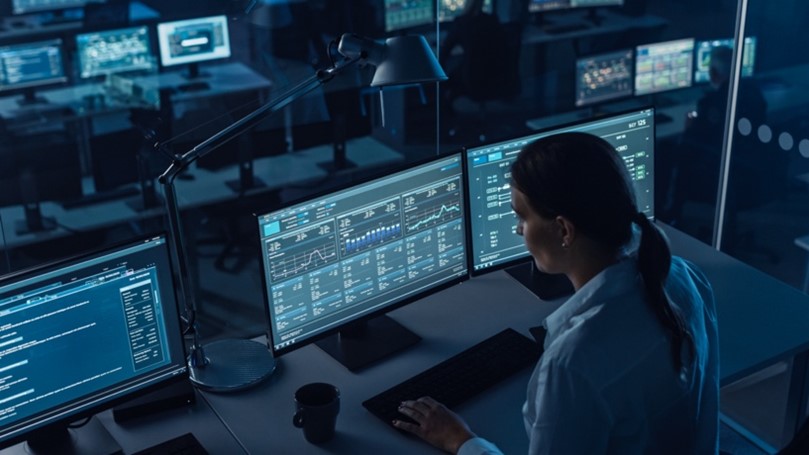Data centers consume 1-2% of the world’s electricity, and demands are growing. As more industries become digitalized, data centers have become essential beyond delivering services to people but for sharing data between machines.
Many giant tech companies at the heart of this exchange have aggressive sustainability goals focused on carbon reduction. With grid edge solutions such as microgrids and battery storage systems, as well as direct current (DC) power transmission, there are many opportunities for operators to maximize their use of renewable generation while reducing their use of fossil-fuel-based energy sources.
Major Challenges in the Industry
The challenges associated with the growth of data centers are manifold. First, they require large power volumes with high reliability and exceptional power quality. Meeting this demand can put significant pressure on power grids.
At the same time, key industry players are looking toward renewable energy as their primary electricity source, in keeping with their goal of minimizing their carbon footprint. With so much demand on the grid amid the transition to clean energy, this can create conflicts. External pressures have pushed operators to consider new sources of renewable energy generation. They also need to continuously ensure the availability of power, which can present challenges due to the intermittency of renewable energy generation.
Data centers typically have several greenhouse gas contributors from construction to operations, including diesel generators that provide backup power and use grid-connected fossil fuel generation sources for cooling, computing, and other operations. Owners and operators of these facilities and the contractors involved in constructing them are looking to the energy industry to improve reliability, increase efficiency, and drive sustainable practices as part of their energy management goals.
Key industry players are looking toward renewable energy as their primary electricity source.
The Aging Grid and Power Disruptions
We’ve all heard about the aging grid—electrical infrastructure in many parts of the world is outdated and susceptible to power outages and disruptions as heatwaves and storms wreak havoc. Widespread adoption of microgrid technologies can help operators take more control of their power supply. Microgrids employ monitoring and energy storage capabilities to manage power locally, providing the ability to minimize the impact of regional power outages and disruptions. These systems, particularly when coupled with renewable generation sources like solar panels, wind turbines, or geothermal generators, can enable the transition away from traditional backup sources such as diesel generators. Investing in renewable energy to support their needs is a critical success factor.

As more industries become digitalized, data centers have become essential.
Hitachi Energy has been a partner to grid operators for over 100 years. We bring unique capability and experience in solving large-scale industrial power problems and building mechanisms that support reliable operations. Our global footprint ensures that we can provide data center operators with the local, specialized support essential to building new facilities sustainably. In three years, we’ve managed to match the 400% growth in data traffic. From design and delivery up to the operation, we offer sustainable solutions throughout the life cycle of data centers. As large companies aim to reduce the carbon emissions produced by third-party suppliers, we are proud to be 100% fossil-free in our production and operations.
The Future of Data Centers
We are moving toward a future where data center operators are major participants in the grid, as energy consumers, as potential developers of local renewable generation such as solar farms to support their operations, and as microgrid operators. As energy consumption grows exponentially, these companies are uniquely positioned to revamp their current operations to produce and consume efficient, renewable power. Read more.




